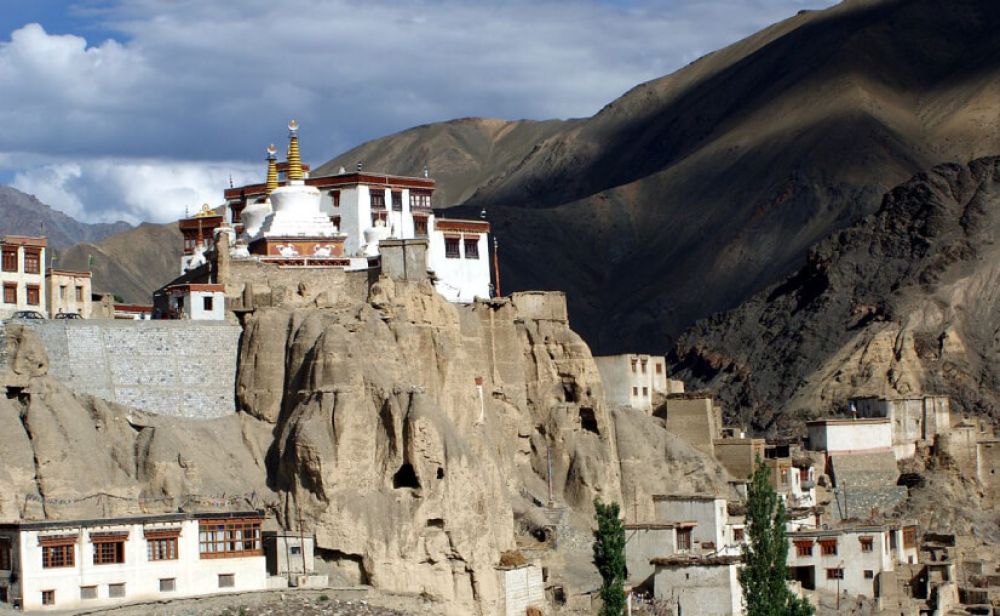

Nestled in the remote valley of Zanskar within the Indian Himalayas, the Zongkhul Monastery stands as a testament to the ancient spiritual culture of Ladakh. This cliffside monastery, perched precariously along the rock face, is one of the most astoundingly located monastic treasures in the region.
The roots of Zongkhul Monastery trace back to the 11th century when it was established as a meditation site by Naropa, a famous Indian Buddhist yogi and scholar. Legends say that Naropa meditated in one of the two caves that now contain the monastery's primary temples. Impressions on the rock, believed to be his footprints and the imprint of his meditation seat, can still be seen and are revered by the locals and monks alike.
Over the years, the monastery has become a repository of murals, frescoes, and artifacts that reflect the Kashmiri style of Buddhist art. It also holds a rich collection of texts and manuscripts pertaining to the Buddhist literature and traditions.
Tourism in Zanskar, and particularly in Zongkhul, has been a relatively recent development. For centuries, the region remained isolated, visited mostly by wandering monks and the most intrepid of traders. It wasn't until the late 20th century that Zanskar started seeing a trickle of visitors, primarily adventure tourists and trekkers drawn to its untouched beauty and challenging landscapes.
The Indian government has taken steps to preserve the unique heritage of Zongkhul and promote it as a destination for cultural tourism. The remote location of the monastery and the limited accessibility have helped maintain its pristine condition and spiritual atmosphere, drawing visitors in search of solitude and a deeper cultural connection.
In recent years, there has been a noticeable shift in the tourism trends of Zanskar. The region is becoming increasingly popular among those looking for off-the-beaten-path experiences and spiritual retreats. The development of infrastructure, such as the construction of new roads, has made Zanskar more accessible, while still preserving its untouched charm.
Today, Zongkhul Monastery features as a highlight in the itineraries of cultural tours centered around Ladakh's monastic festivals and Buddhist teachings. It's a site of particular interest for those fascinated by Himalayan Buddhism, ancient meditation traditions, and stunning high-altitude scenery.
Ecotourism is also emerging, with an emphasis on sustainable travel. Tourists are encouraged to respect the fragile environment and the traditional way of life of the local populace. Homestays and community-driven tourism initiatives are becoming more common, offering visitors an immersive experience while benefiting the indigenous communities.
The Zongkhul Monastery continues to stand as a beacon of spirituality and heritage in the Zanskar region. Its history is intertwined with the religious and cultural evolution of Ladakh, and today, it plays a critical role in the sustainable development of tourism within the area. For the discerning traveler, Zongkhul Monastery offers an unforgettable journey into the serenity and mysticism of the Himalayas.